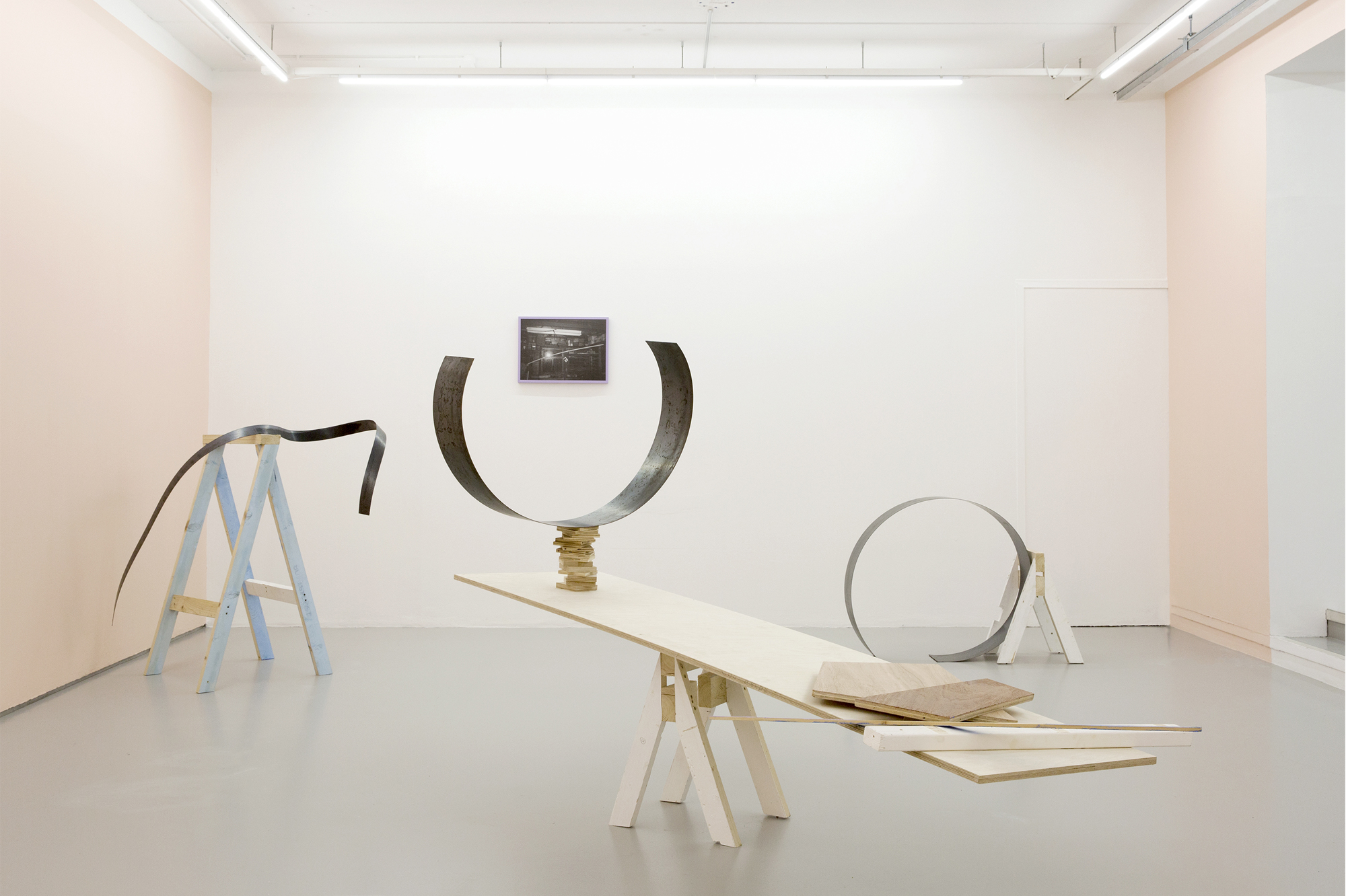The Green Journal: Spring
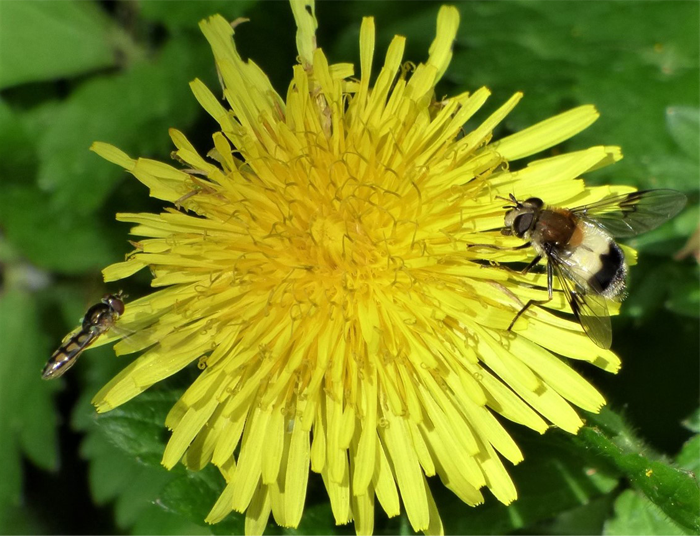
In this second Green Journal entry, Sandra Murphy from our Visitor and Engagement team, will keep you updated on some of the seasonal changes on the grounds at IMMA. Topics include some tips on how to create a Wildflower Garden to help encourage Biodiversity in your garden.
………………………………………………………………………………..
Looking back to February & March…
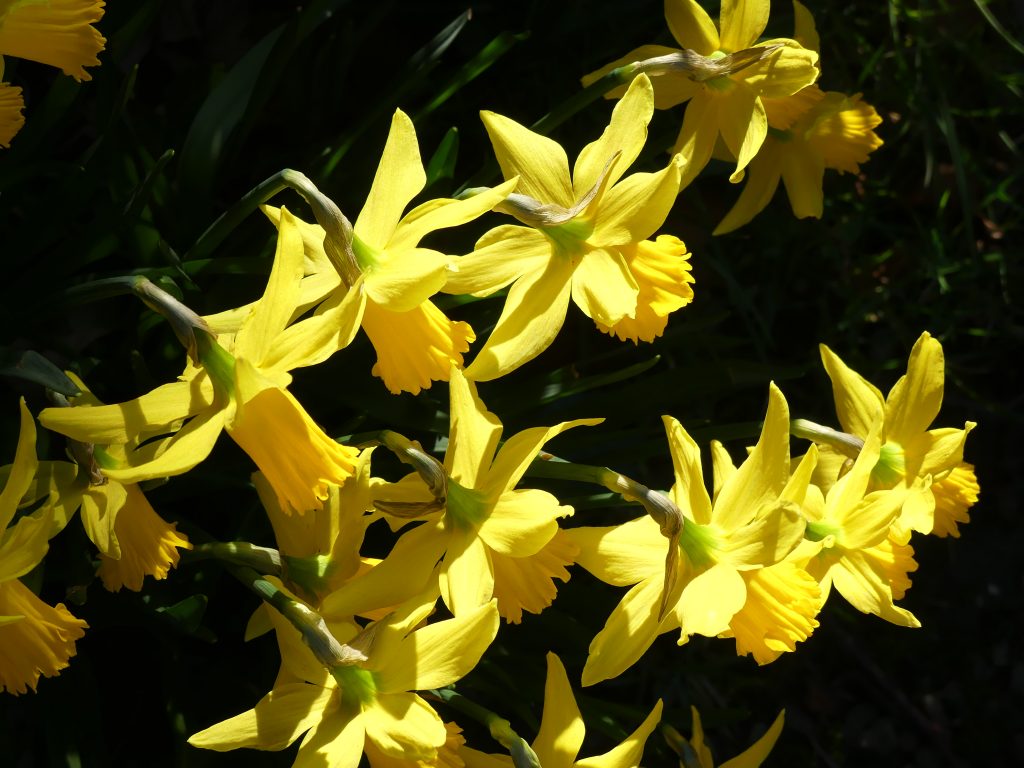
Daffodils were in full blossom and could be seen on the Terrace and in the Formal Gardens at IMMA.
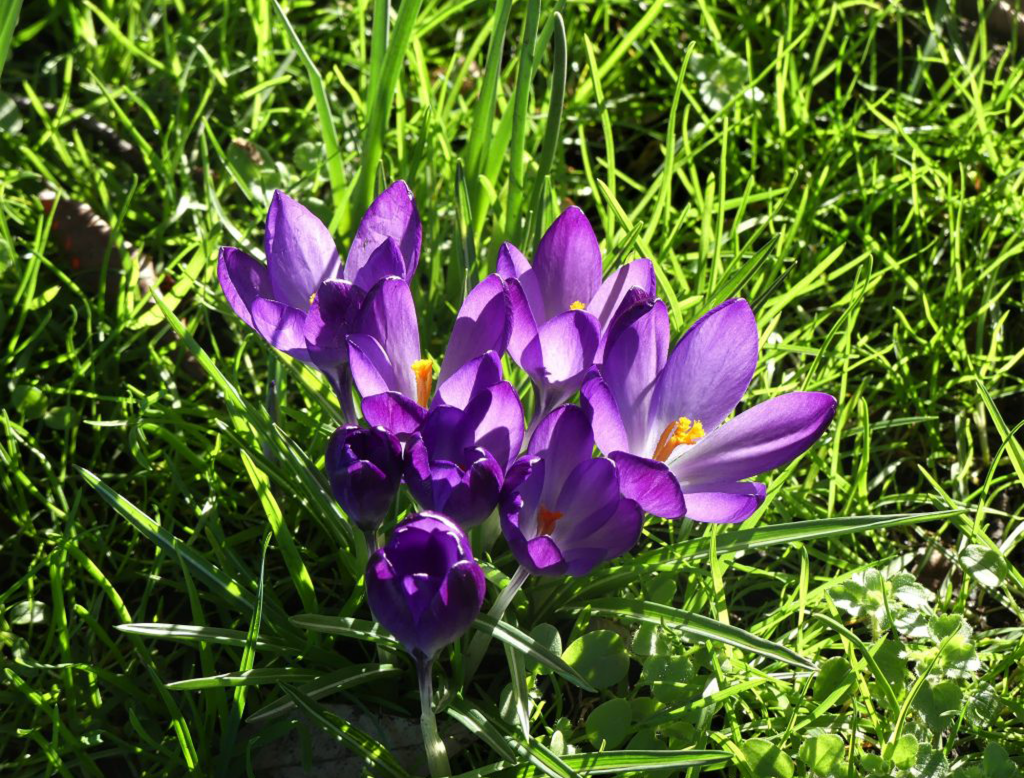
Purple flowering crocus scattered among the spring flowers which included cyclamen and anemone beneath the trees on the Terrace and by the fountains in the Formal Gardens.
Early Pollinators in Spring.
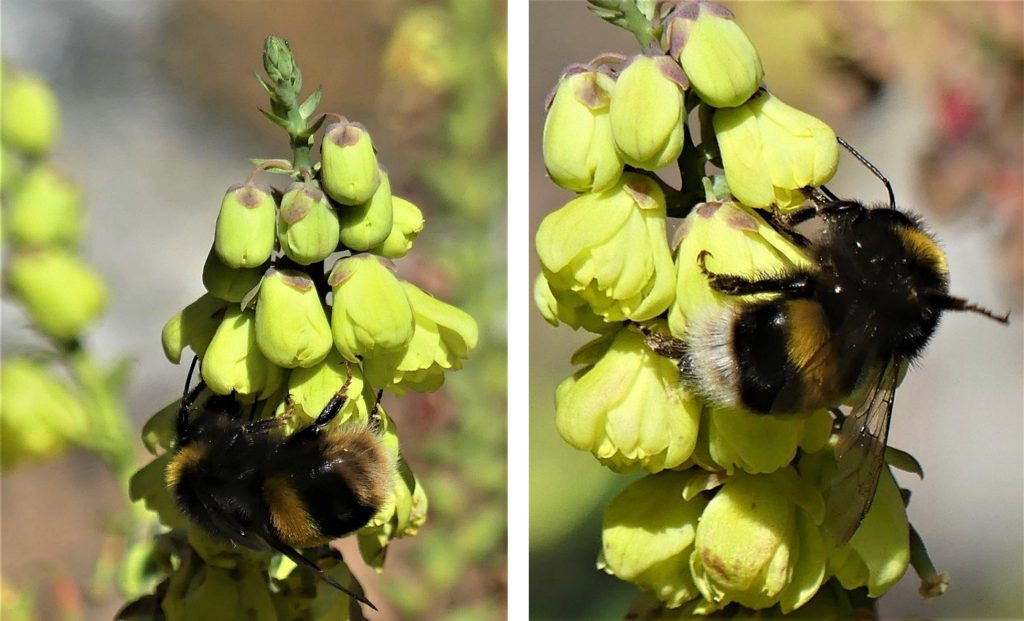
Buff-tailed bumblebee queen is one of the earlier species to emerge in early spring. Feeding on the yellow mahonia in the Formal Gardens. Mahonia is a non-native plant but is a great nectar-rich shrub for early pollinators.
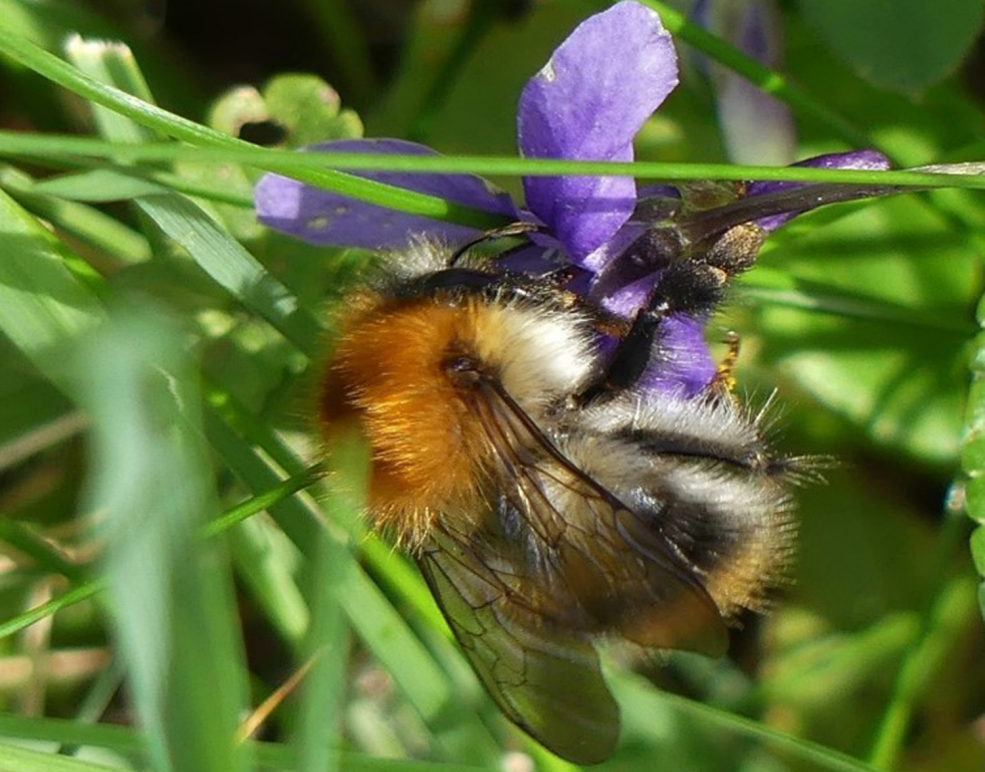
White-tailed bumblebee queen can be up to 20mm in length. Early emerging bees rely on dandelions. Don’t mow let it grow!
World Bee Day takes place on 20th May 2021. Research shows that our Irish bee populations are still in decline, so remember to plant some pollinator friendly plants.
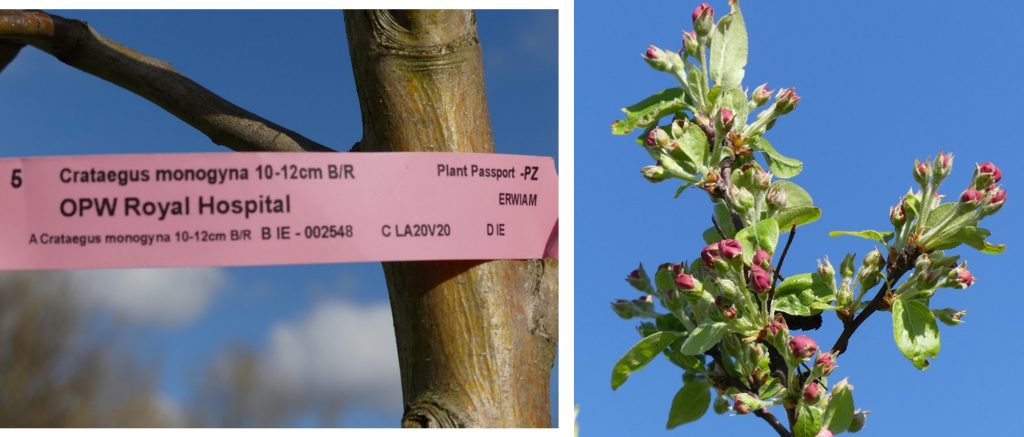
2. Spring flowering on crab apple tree.
Common hawthorn, also known as thorny hedge. This tree is native to Ireland and supports over 200 insects and is also pollinated by insects. Recently planted by OPW garden team at IMMA.
Now is a good time to consider planting native trees such as willow, silver birch, rowan and hazel.
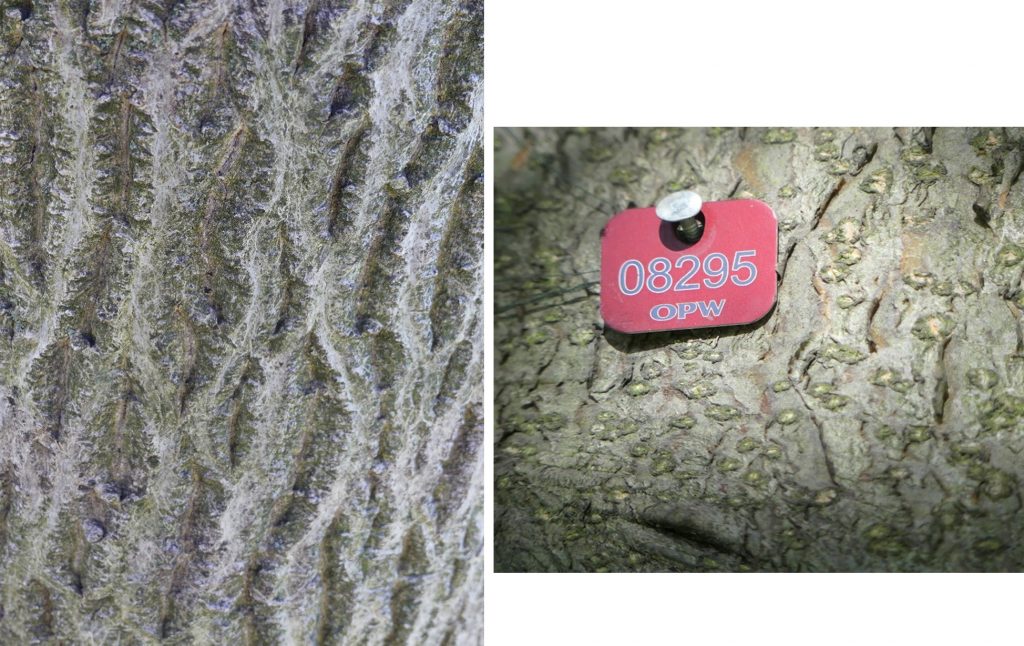
2. OPW Tree Tags
Tree tags – a recent arrival at IMMA. Keeping a record of and caring for the Collection in The Green Cube.
Bark of the mature holly tree. Female trees produce the red berry.
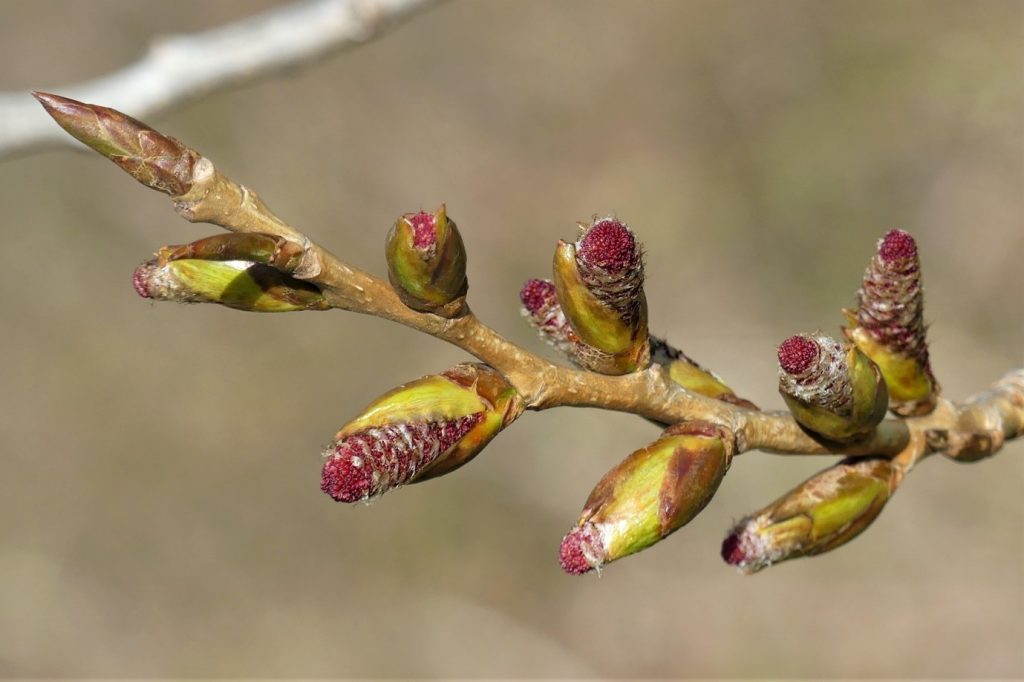
Black or white poplar are one of the first trees to release pollen in Spring. These trees can be seen on the perimeters of the meadows in the grounds at IMMA .
Rosebuds can be found climbing the sunny south wall in the Formal Gardens.
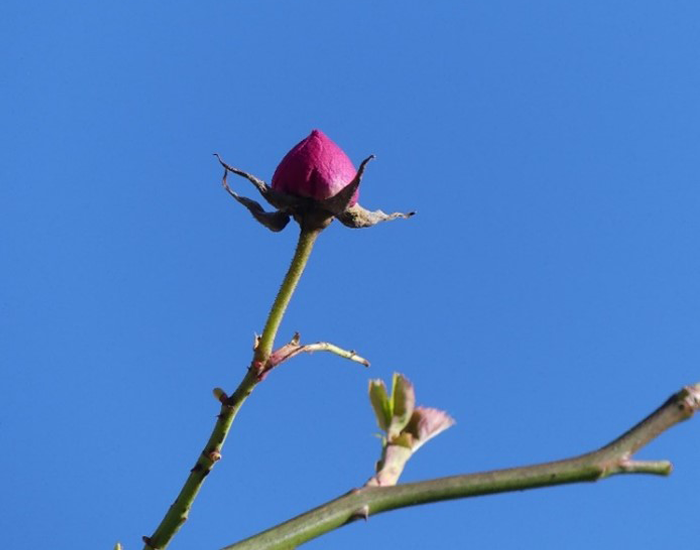
‘On an old apple tree in the physician’s garden of the Old Man’s Hospital, Kilmainham.’
The Flora of the County Dublin (1904) by Nathaniel Colgan.
Mistletoe has returned again to the gardens with a little help from Mary Condon OPW. Mistletoe is a strange species. Its scientific name is Viscum album; usually bird-distributed, the seeds are covered in a sticky, viscous gel that attaches itself to the bark of a tree.

A ‘hemiparasite’ or partial parasite, it usually grows on branches of species such as apple, lime, poplar, willow and hawthorn. It is an evergreen, forming large, spherical masses of vegetation which are attached to the host tree by a structure called a haustorium. This is a root which penetrates the outer tissue of the host tree and draws out nutrients and water, causing damage to the host tree by reducing its growth. Birds are responsible for spreading the seeds, either by passing them through their guts or by wiping their sticky beaks onto trees (courtesy of Zoë Devlin, author of Wildflowers of Ireland).

2. Mistle Thrush
The mistle thrush acquired its common name by being one of those birds which favours a diet of mistletoe berries containing these seeds. Larger than the song thrush and also known as the storm cock, the mistle thrush is usually the first bird to sing after a storm or heavy rainfall.
Compared to the song thrush, the dark spots on the breast are rounded and not arrow-headed in shape. This bird utters a rattling alarm call. Can be spotted on the Terrace in the grounds at IMMA.

A busy little bird and very enjoyable to watch on the bird feeder, flying back and forward with nuts to eat them in a different location.
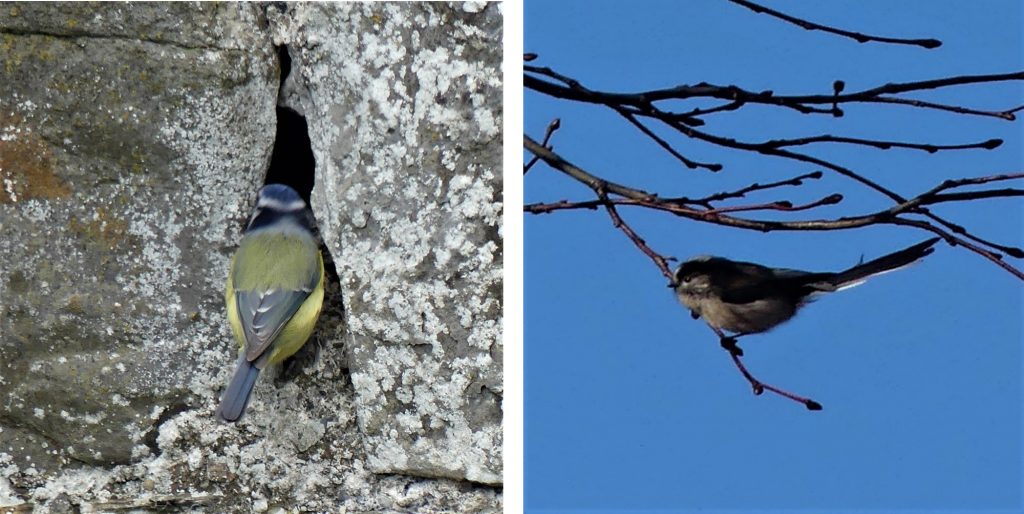
2. Long – Tailed Tit.
Hard to spot but once seen, the Long-Tailed Tit is never forgotten. Very long tail and often seen flying in flocks but only a pair were seen on the day.
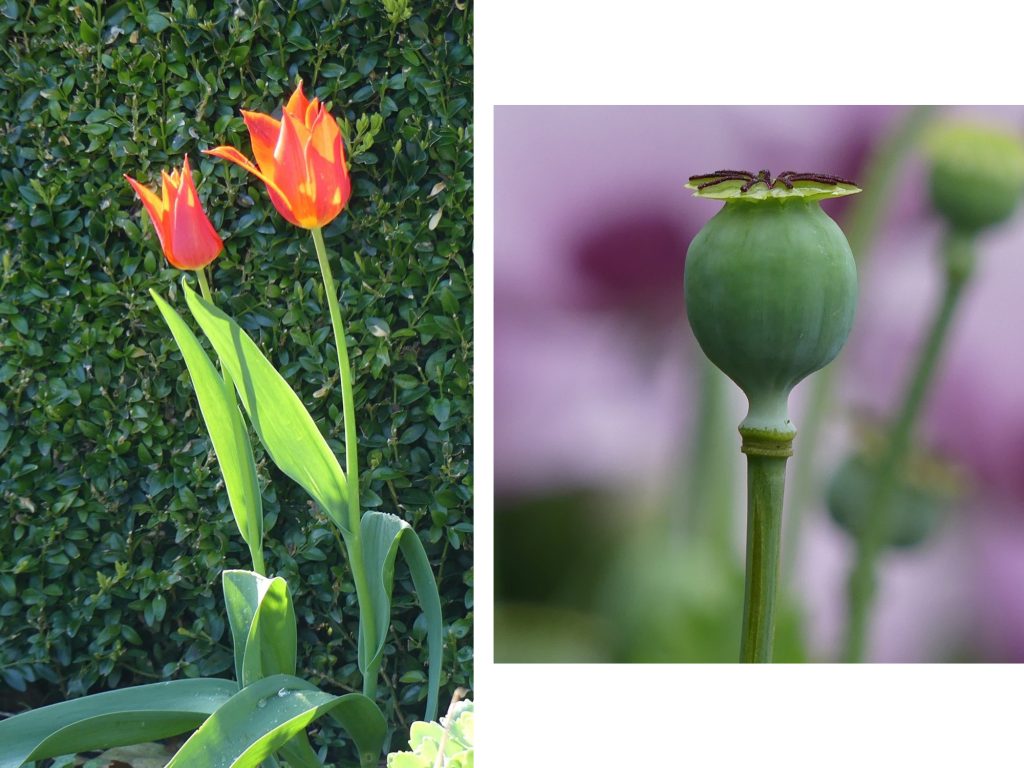
2. Poppy seed head in the meadows at IMMA in 2020.
To Let
Cosy bijoux home in D8.
Amenities include: Museums, cafes, great views.
Suitable for small families.
Viewing from Spring to Summer.
Quiet neighbours except for the Jackdaw Family up the road!

Now is the time to get those nest boxes built or bought.
Birdwatch Ireland have some clear instructions on their website on building your own nest box. Please see links below.
Always buy native Irish wildflower seed. Avoid supermarket seeds.
Supermarket seeds contain non-native species of plants and when grown can become an invasive species. Most of those plants grown from seed do not support our native Irish birds, insects or butterflies. Even a small 6×6 Irish wildflower patch will attract wildlife to your garden and will help biodiversity in Ireland.
See further information on how to make an annual wildflower meadow here.
Useful links
How to identify and record common Irish Bumblebees, Biodiversity Ireland.
Pollinator-friendly grass cutting
Many thanks to Mary Condon OPW and her team at IMMA.
Thank you also to Zoe Devlin for her amazing information on Mistletoe.
Categories
Further Reading
The Green Journal: New arrivals at the Green Cube
In this first Green Journal entry, Sandra Murphy from our Visitor Engagement Team, will keep you updated on some of the seasonal changes and recent arrivals on the grounds of IMMA.
Growing Wild at IMMA
We are delighted to present a new series exploring the biodiversity of the IMMA site. Although the grounds of IMMA are currently closed Sandra Murphy, from our Visitor Engagement Team, would like to share wi...
The Secret Seven Go Fly at IMMA
Over recent weeks IMMA has been preparing for re-opening, as restrictions have been reduced nationwide, we are delighted that the grounds at IMMA are now once again fully open to the public. In this article,...
Up Next
Photographs Reassembled
Thu Mar 25th, 2021